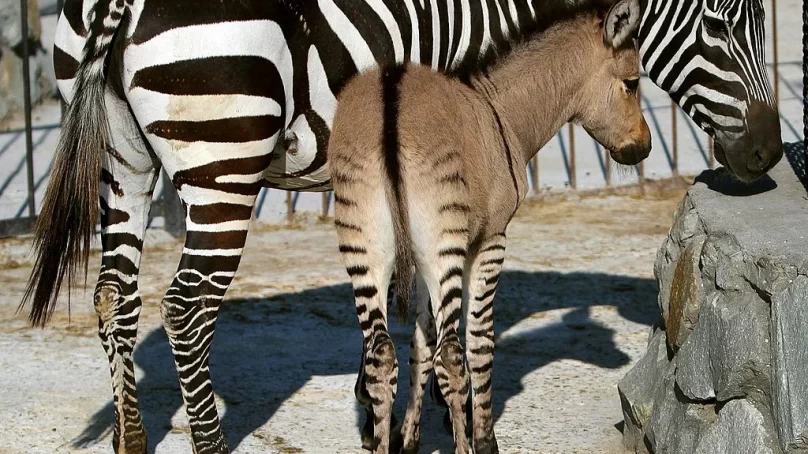
I gratefully acknowledge the influence of Dr Edgar Schein on my understanding of organisational culture and cultural DNA.
Recently, several of my clients have become extremely interested in exploring what they call their “corporate DNA.” At first I resisted because I was concerned that this metaphor implied that they were incapable of changing. But for the most part, this model is being used to explore the unique identity of an organisation – the historical strengths that are admired and should be preserved and transmitted to future generations.
Every kid who has the luxury of getting an education learns the basics of DNA. DNA is what causes a giraffe to have a long neck, kangaroos to have pouches, and porcupines to have quills instead of fur. Tadpoles turn into frogs, not butterflies, because of their DNA. And a lot of behaviour has its roots in an organism’s DNA. Birds have wings, but dogs don’t, therefore dogs don’t fly. Snakes, lacking both legs and wings, resort to crawling. But what is the meaning of the DNA of an organisation?
If you look up ‘Corporate DN’ on Wikipedia you’ll be redirected to an article on “organisational culture.” Here’s how organisational culture and cultural DNA are related. Organisational culture is “the way we are” today, including the laundry list of do’s and don’ts that the old-timers share with newbies on their first day of work. It’s “the way we do things around here,” even if we’ve forgotten why we’re doing them. It’s the collection of observable patterns in an organisation at the present time. People naturally assume that these patterns will continue into the future.
And they probably will, unless the organisation experiences a deep, sometimes radical, change. Organisational culture is made visible through behaviours, and behaviour is driven by assumptions, beliefs and patterned thinking, in addition to the conscious choices that we make to perpetuate that culture. As my mentor, Dr Edgar Schein, has taught me, organisational culture has both an internal side – how we get along, how we do things – and an external side – what we do to survive and grow, including our strategy and tactics.
Culture infuses both the internal and external through the deeper assumptions of who we are, our identity, and our sense of our brand based on our history. Organisational DNA is a property of the culture, and is the historical basis of why we behave this way the genetic code at the root of these behaviours.
Like the DNA of birds and snakes, it influences whether our organisation will fly or crawl. Although we can change our behaviours radically, our DNA establishes some boundaries. A dog that’s been abused might bark aggressively or bite humans, but it won’t start eating worms, tweeting or building a nest out of twigs!
Culture as internal brand
One useful way to think about organisational culture is as your internal brand. A brand is a promise. Most companies carefully consider what their brand communicates externally, but what is the brand promise that your company makes to your employees?
In the same way that customers have expectations based on brand image, your organisational culture creates expectations in your employees. I strongly believe that an authentic external brand must be based on an organisational culture with which it is aligned.
DNA isn’t destiny
As a scientist, I worry that DNA as a metaphor for corporate identity isn’t technically accurate. People frequently talk about their organisation’s DNA as if it can’t, or shouldn’t, be changed. Some executives proudly speak of their corporate history as if their future is determined primarily by their past. So, before we embrace this metaphor, there are a few things we should know about DNA.
- DNA in nature isn’t forever fixed, nor does it unalterably determine what happens in the life of an organism. Mutations occur naturally, scientists intentionally create genetic modifications, and reproductive processes combine genes in ways that create new and sometimes surprising results, like the baby “Zonkey” in this picture.
Similarly, organisations that grow through mergers and acquisitions must integrate the combined DNA of previously distinct entities.
- Most genetic code isn’t expressed. For example, over 98% of human genetic material is so-called “non[1]coding DNA.” This DNA isn’t junk! It’s important to regulating and protecting the genome, but it doesn’t directly dictate our development as human beings. A parallel in organisations is the importance of focusing on stories and examples that bring us together around our shared purpose, and selectively forget what doesn’t contribute to a better future.
- Environmental factors like temperature and light can impact gene expression. For example, Thomas Hunt Morgan’s Experimental Zoology reports that genetically identical caterpillars exposed to different colours of light during their chrysalis stage developed dramatic differences in wing colour.
Likewise, organisations are subject to external influences, and some (but not most) do find ways to break free of their historical roots, rather than continue unproductive trends, and therefore avoid becoming extinct.
- Here is yet more evidence that we are not slaves to our DNA: The old paradigm of “genetic determinism” is being replaced with the idea that genes respond to information – both external environments and cognitive (internal) environments. Gene expression is impacted by the context in which they exist.
In spite of my scientific misgivings, I’ve found that exploring the DNA of an organisation can be an extremely effective way to create a shared sense of identity among even globally diverse, dispersed teams. Groups with a clear understanding of their shared core identity, and the kinds of behaviours that naturally spring from this understanding, form more cohesive teams. Individual behaviours tend to naturally align with this team identity, without the need for direction, rules, and oversight.
If you want to discover your organisation’s cultural DNA and use it to unite your team, for crying out loud don’t rush over to your PR department to pick up a stack of those glossy brochures containing the company history and poignant stories of the founders. I know managers who have hundreds of these tree-killers stashed in their office. Giving them out provokes cynicism, and pretty much guarantees they’ll go straight into the recycling bin.
Here are three powerful and engaging exercises that I’ve found to be much more effective than handing out brochures. It’s all about stories. (People remember stories, as Chip and Dan Heath explained in Made to Stick.) If you want a message to change the results you’re getting in your team it must be Heard, Understood, Remembered, and Acted upon (HURrAh!), so I strongly recommend using stories as the basis of your DNA discussions. But those stories must be shared and discussed, not just read in a pamphlet. A story-based “DNA expedition” will generate increased loyalty to your company and inspire behaviour that aligns with shared values discovered during your cultural DNA session.
The Founders and Key Moments in Your History
The first stories to explore are those of the people who founded your organisation. Their stories often inspire admiration because of their courageous risk-taking, determination or staunch commitment to something beyond making a profit. Here are a few of my favourited examples:
• Suntory – In 1899 Shinjiro Torii opened a wine shop in Osaka, Japan, and then proceeded to make a popular port wine domestically. Later, Suntory was the first to distil whiskey in Japan. Of course, many people believed that it was impossible to make a great whiskey in Japan, but his “Yatte Minahare!” spirit (roughly translated, “Go for It!”) prevailed.
• Kuraray: Magosaburo Ohara founded this company in 1926, and his son Soichiro Ohara has continued the legacy of “contributing to the world and individual well-being through actions that others are unable to produce.” This would be just a slogan on a website if it weren’t for my personal experience working with Kuraray for the past 10 years. I find myself quoting Mr Ohara’s advice to teams locked in an unproductive pattern of “death by consensus”. He famously said “If we wait until everyone agrees, it’s too late! We must take action when only two or three executives agree.” Indeed!
• Yamaha: In 1887 Torakusu Yamaha built his first reed organ and hand-carried it over the mountains to the music university in Tokyo where it was flatly rejected due to its poor tuning. Undaunted, he created an improved version, and carried it once again on this torturous journey. This organ became the foundation of the Yamaha music business.
• Hewlett-Packard: The friendship forged by Bill Hewlett and Dave Packard in 1934 was the basis of a legendary company. I was fortunate enough to work there for 10 years while Bill and Dave were still a palpable presence in the form of The HP Way. As an idealistic young person who believed the stories in those glossy brochures, I felt it was my personal responsibility to live up to the legacy that these two gentlemen had created. This resulted in an annual chastisement in my performance reviews: “Kimberly has unrealistically high expectations for herself and others.” Yup! Ya got that right! But it was Bill and Dave’s high expectations that I felt I was living up to, not my own.











